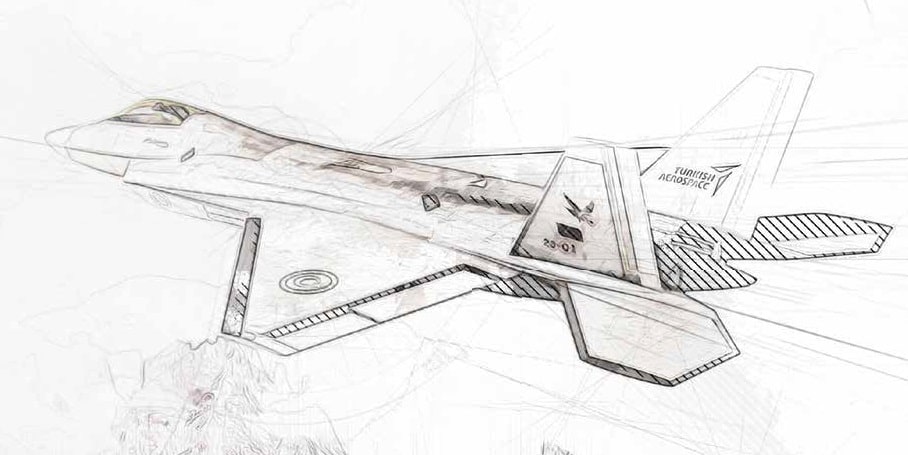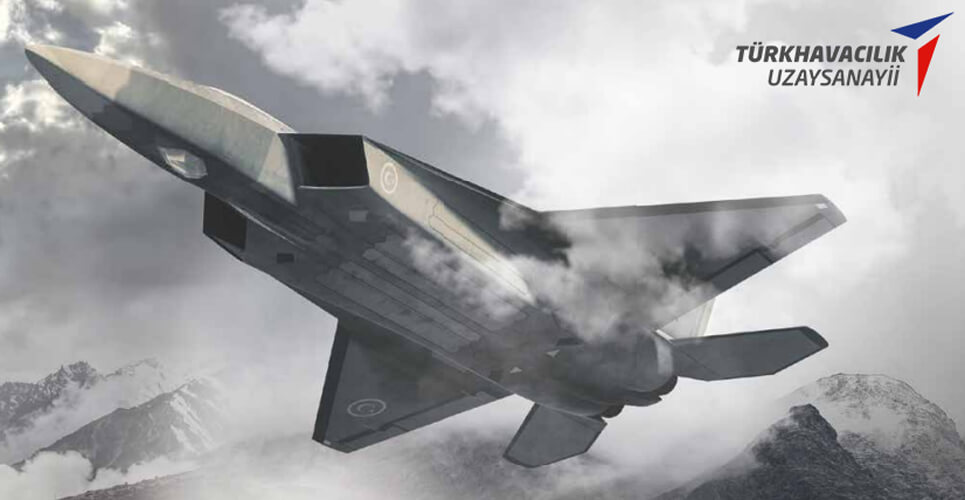
Turkish Aerospace keeps dreaming big while producing its domestic products. The design and production stages of our pr oducts equipped with outstanding capabilities via new technologies are arousing the curiosity of many people who closely follo w the sector. But what do you kno w about our work on the low observability feature of the Turkish Fighter?
The starting point of the Turkish Fighter Project was to provide the Turkish Air Force with a modern fighter aircraft featuring leading edge technology to replace F-16s.
The fighter, designed with local resources, displays strong capabilities like internal weapon bays, high maneuvering capability, improved situational awareness, and sensor fusion.
With its sensor fusion capability, the aircraft will combine the data received from various sensors integrated on the platform before conveying the information to the pilot. As a result, the workload of the pilot will be reduced and s/he will be able to make the best decisions in all conditions.
Thanks to its fifth-generation qualities, the aircraft will enhance the power of the Turkish Air Force in modern warfare and also enable the development of prominent technologies with domestic means such as electrooptics, radio frequency, microprocessors, and advanced composite materials.
Several countries have been making an effort to design and actualize the low observability features of the Turkish Fighter. The Turkish Fighter’s high capability in today’s air combat scene will enable it to succeed as a disincentive factor.
The aircraft will step forward among its peers with its low observability feature that aims to decrease the air platforms’ perceptibility by radar and heat-seeking missiles.

Operations for the low observability feature
To acquire the low observability feature, one of the aviation industry’s most striking developments, Turkish Aerospace carried out operations led by the team of Low Observability Engineering (Electromagnetics and Path Analysis), in which each member undertakes great responsibilities. Since the low observability feature cannot be developed independently of the platform’s design, all operations need to be carried out simultaneously and integrated with the primary design operation. Engineering teams provide great support for developing the platform’s elements such as air scoop, empennage, and engine exhaust.
Working under Turkish Aerospace Deputy Directorate General of Turkish Fighter with 18 team members, the Low Observability Engineering team supports the design activities of the Turkish Fighter platform, and, at the same time, creates the software and measurement infrastructure necessary for the maturation and validation of the design.
The team creates a computer simulation of the aircraft and determines its reaction to radar waves by using computational electromagnetics software.
The team focuses on the research and optimization of the system, subsystem, and materials including the geometry of the aircraft to fulfill the analysis and test processes for the low observability feature. The team’s hard work is beneficial not only for the Turkish Fighter Project, but also positions Turkish Aerospace as a leading player in the aviation industry.

Innovations brought along by Turkish Fighter
Due to the multitude of unknown elements involved in the project, Turkish Aerospace President and CEO Prof. Temel Kotil initiated a great effort to build one of Turkey’s biggest computer infrastructures in the company. Meanwhile Turkish Aerospace continues to manufacture full size or scale models of the critical components of the aircraft with cost-effective indigenous methods developed to verify the vehicle’s computer simulation models with laboratory measurements.
While Radar Cross Section (RCS) measurements are made at Gebze Laboratory in collaboration with TUBITAK BILGEM, Turkish Aerospace keeps working on putting the RCS test infrastructure into use. Both Turkish Fighter platforms and other air platforms developed nationally will use the facility for measurements.
Analysis and test operations at the platform and subcomponent levels as part of the low observability feature are in the future plans of the project. The ongoing studies to develop computer-supported electromagnetic simulations and composite-based tests to support these simulations can lead to high spoking, and will directly influence the aircraft’s low observability characteristic. The company is carrying out a big operation to realize system, subsystem, and material tests with domestic means.
New test centers will be built
Within the scope of the Turkish Fighter Project, the construction and the activation of three major facilities, EMI/EMC Tests Facility (SATF, Shielded Anechoic Test Facility), Lightning Test Facility, and Near Field RCS Test Facility (NFRTF), will be finished in a few years. The Near Field RCS Test Facility is planned to conduct Radar Cross Section (RCS) measurements for both the Turkish Fighter and other air platforms in addition to research on their low observability capability.
The low observability technology, which will provide Turkish Aerospace with new innovations and competence, will equip the Turkish Fighter with an operational advantage and will make Turkish Aerospace a leading player in the industry.
Source: Turkish Aerospace




